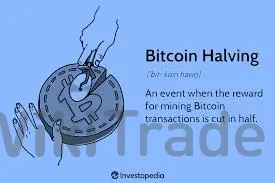How long does it take to mine a bitcoin
Abstract: Mining a Bitcoin is a complex process that depends on various factors, including the mining difficulty and the hash rate of your mining equipment. As of my last update, the average time to mine a single Bitcoin is approximately 10 minutes, but this is for the entire network, not an individual miner. For individual miners, especially those with less powerful equipment, it could take much longer or may never happen due to the competitive nature of mining. It's important to note that mining requires significant computational power and electricity, making it a challenging and often costly endeavor for beginners.
Introduction to Bitcoin
Bitcoin, represented by the symbol ₿, is a decentralized digital currency that operates without a central bank or single administrator. Introduced in 2008 by the mysterious Satoshi Nakamoto, Bitcoin has grown to become a significant investment and a widely recognized form of payment globally.

Bitcoin Basics
- Symbol: ₿
- Transactions: Verified through cryptography and recorded on a public ledger called the blockchain.
- Value: Varies based on supply and demand, with a current market value that can be checked on various cryptocurrency exchanges.

The Origin of Bitcoin
Bitcoin's creation was a response to the 2008 financial crisis. On January 3, 2009, the first Bitcoin was mined by Satoshi Nakamoto, who embedded a headline from The Times in the Genesis Block as a timestamp.

How Bitcoin Works
Bitcoin operates on a peer-to-peer network where transactions are managed through a distributed database. Miners secure these transactions and are rewarded with new Bitcoins.

Blockchain Technology
Blockchain is the foundation of Bitcoin, ensuring that transactions are accurate, fair, and traceable. Every 10 minutes, transaction data is packaged into a new block and added to the chain in a chronological order.

Mining and Rewards
Miners compete to solve complex equations to validate transactions and are rewarded with new Bitcoins. The reward, which started at 50 BTC per block, halves approximately every four years, with the next halving expected in April 2024.

Understanding Bitcoin Mining
Bitcoin mining is the process of verifying transactions and adding them to the blockchain. Miners use powerful hardware to find a specific code, or hash, that confirms the validity of a block of transactions.

Mining Difficulty
The time it takes to mine a Bitcoin varies and is influenced by the mining difficulty, which adjusts approximately every two weeks based on the network's computing power. The target is to maintain a block generation time of about 10 minutes.

Solo vs. Pool Mining
Solo mining is challenging due to the competition with other miners worldwide. Joining a mining pool increases the chances of earning rewards as miners contribute their computing power collectively.

Mining Pools
There are different types of mining pools:
- Proportional pools: Distribute rewards based on the miner's contribution to the computing power.
- Pay-per-last-N-shares pools: Pay miners based on their share of time in the pool.
- Pay-per-share pools: Offer a fixed income for the computing power contributed daily.

The Reality of Mining Bitcoin Alone
The Proof of Work protocol makes solo mining extremely competitive. Without powerful equipment, it's nearly impossible for an individual to outcompete global mining operations.

Cloud Mining
For those without the means to invest in expensive mining hardware, cloud mining services offer an alternative. Users pay a fee to rent computing power and share in the rewards.

Earning Bitcoin Without Investing
It's nearly impossible to earn Bitcoin without some form of investment, whether it's time, computing power, or money. Beware of scams promising free Bitcoin; legitimate earning requires effort and understanding of the market.

Bitcoin Halving
Bitcoin halving occurs approximately every four years, or after every 210,000 blocks, reducing the block reward by half. The next halving is expected in April 2024.

Halving Impact
Each halving event has historically been followed by a significant increase in Bitcoin's price, often reaching an all-time high within 6 to 18 months post-halving.

Halving and Bitcoin Supply
The total supply of Bitcoin is capped at 21 million coins. As of May 2024, with the current block reward at 6.25 BTC per block, the next halving will reduce this to 3.125 BTC.

FAQs
- Mining Time: On average, it takes about 10 minutes to mine a block, which includes 3.125 Bitcoins.
- Network Difficulty: Adjusts every two weeks to maintain a consistent block generation time.
- Computing Power: Higher power means faster block mining.
- Mining Pool Benefits: Increases the frequency of reward collection.
- Electricity for Mining: Professional mining machines consume significant electricity, affecting the cost-effectiveness of mining.
Conclusion
Mining Bitcoin is a complex and competitive process that requires substantial investment and understanding of the technology and market. With the upcoming halving, the mining landscape is set to evolve, impacting both miners and investors.




Top News
 WikiTrade
WikiTrade WikiTrade
WikiTrade WikiTrade
WikiTrade WikiTrade
WikiTrade WikiTrade
WikiTrade WikiTrade
WikiTrade WikiTrade
WikiTrade WikiTrade
WikiTrade WikiTrade
WikiTrade WikiTrade
WikiTrade

